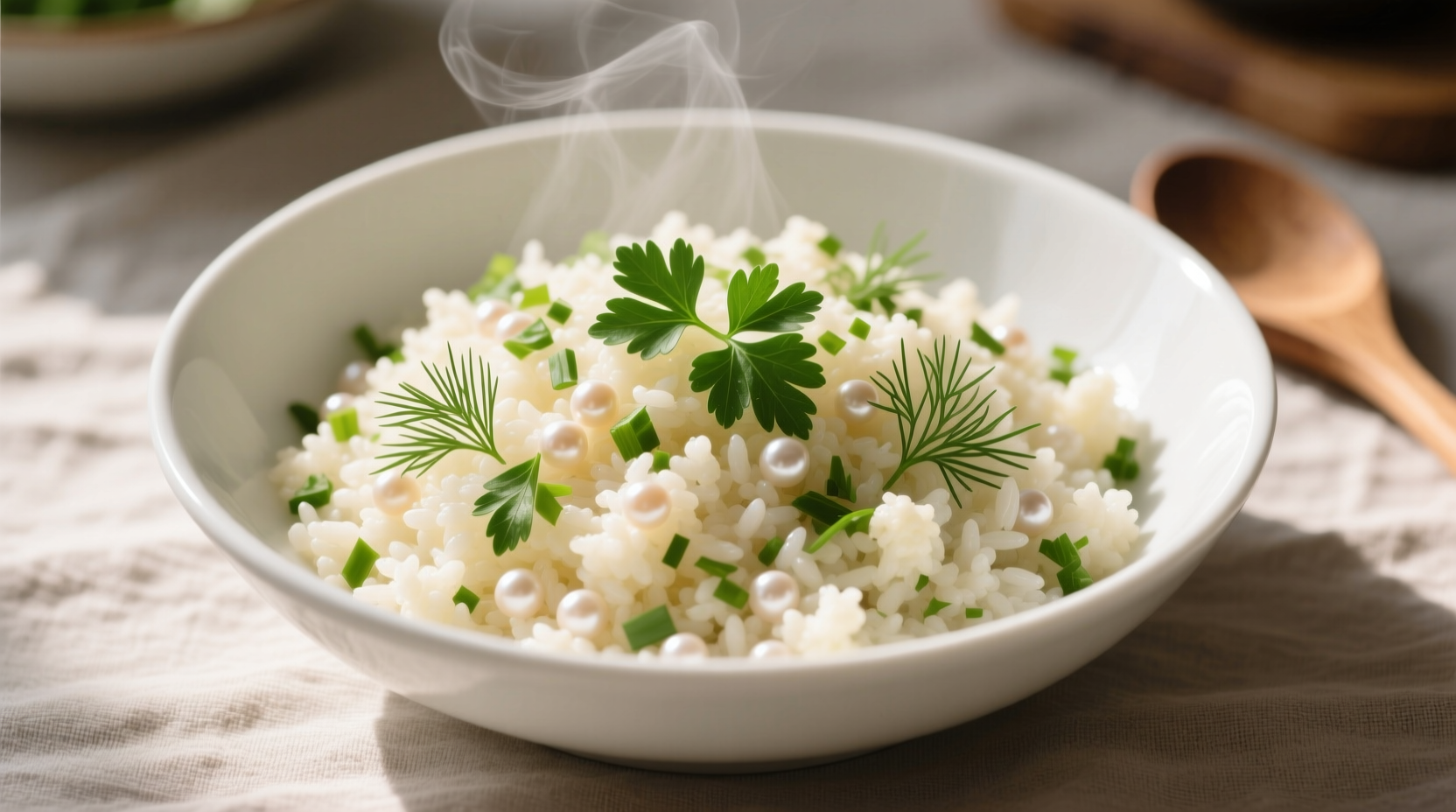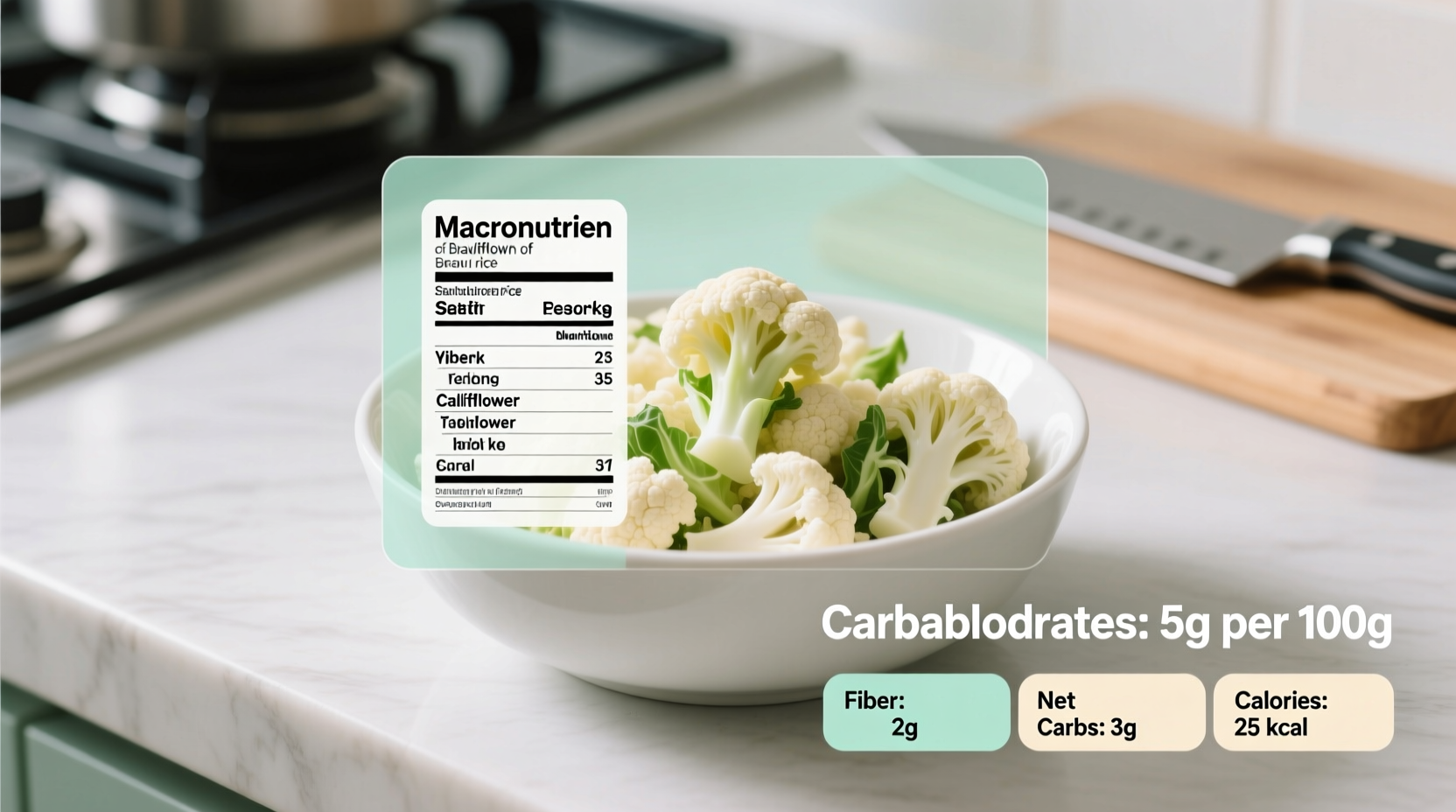Discover exactly how cauliflower rice fits into your low-carb lifestyle with precise nutritional data you can trust. Whether you're following a keto diet, managing diabetes, or simply reducing carbohydrate intake, understanding the exact carb content in cauliflower rice helps you make informed dietary choices without sacrificing your favorite meals.
Understanding Cauliflower Rice Nutrition
When tracking carbohydrates for health or dietary goals, precision matters. Cauliflower rice has become a staple in low-carb kitchens, but many wonder: how many carbs are in cauliflower rice exactly? Let's break down the numbers using data from the USDA FoodData Central database, the official U.S. government nutrition resource.
Raw cauliflower rice (100g serving) contains:
- Total carbohydrates: 5 grams
- Dietary fiber: 2 grams
- Net carbohydrates: 3 grams (total carbs minus fiber)
- Calories: 25
- Protein: 2 grams
These values apply to fresh, raw cauliflower that's been processed into rice-sized pieces. The net carb calculation is particularly important for keto dieters, as fiber doesn't significantly impact blood sugar levels.
| Nutrient | Cauliflower Rice (100g) | White Rice (100g) | Brown Rice (100g) |
|---|---|---|---|
| Total Carbs | 5g | 28g | 26g |
| Dietary Fiber | 2g | 0.4g | 1.6g |
| Net Carbs | 3g | 27.6g | 24.4g |
| Calories | 25 | 130 | 112 |
This stark comparison shows why cauliflower rice has become so popular among those reducing carbohydrate intake. While traditional rice delivers about 45 grams of carbs per cooked cup, cauliflower rice provides just 5 grams of total carbs for the same volume.
How Preparation Affects Carb Content
The carb count in cauliflower rice can vary based on preparation methods. Understanding these context boundaries helps you maintain accurate tracking:
- Raw vs. cooked: Cooking cauliflower rice doesn't significantly change carb content, but it does reduce volume. One cup of raw cauliflower yields about ½ cup cooked, meaning you'd consume fewer carbs when eating the same volume of cooked versus raw.
- Store-bought vs. homemade: Pre-packaged cauliflower rice typically contains similar carb counts to homemade, but always check labels as some brands add starches or other ingredients that increase carb content.
- Added ingredients: When preparing cauliflower rice dishes, be mindful that oils, sauces, and mix-ins can affect your overall carb intake, even if the cauliflower itself remains low-carb.

Practical Applications for Low-Carb Dieters
For those following a ketogenic diet, maintaining net carb intake below 20-50 grams daily is crucial. With just 3 grams of net carbs per 100g serving, cauliflower rice provides remarkable flexibility:
- You can enjoy a full cup of cauliflower rice while staying well within keto carb limits
- It offers nearly six times more volume per gram of net carbs compared to white rice
- The high water content (92%) and fiber help promote satiety without excess carbs
Registered dietitians note that the acceptance of cauliflower rice has evolved significantly since 2015, when low-carb alternatives were less common. As understanding of net carbs has improved, more health professionals now recommend vegetable-based rice substitutes for clients managing blood sugar or carbohydrate intake.
Maximizing Nutritional Value
To get the most nutritional benefit from cauliflower rice while keeping carb counts accurate:
- Measure before ricing: Cauliflower loses volume when processed, so weigh your cauliflower before turning it into rice for accurate tracking
- Avoid overcooking: Excessive cooking can break down fiber, potentially affecting net carb calculations
- Pair with healthy fats: Combining cauliflower rice with olive oil, avocado, or nuts helps absorb fat-soluble vitamins
- Season wisely: Use herbs and spices instead of sugary sauces to maintain low carb counts
Remember that individual nutritional needs vary. While cauliflower rice works well for most low-carb diets, consult with a nutrition professional if you have specific health conditions affecting carbohydrate metabolism.
Frequently Asked Questions
How many carbs are in a cup of cooked cauliflower rice?
One cup (about 150g) of cooked cauliflower rice contains approximately 7.5 grams of total carbohydrates and 4.5 grams of net carbs. Cooking reduces volume but not the actual carb content per gram, so a cup of cooked cauliflower rice contains slightly more cauliflower (and thus slightly more carbs) than a cup of raw.
Is cauliflower rice suitable for a keto diet?
Yes, cauliflower rice is an excellent keto-friendly alternative with just 3 grams of net carbs per 100g serving. This makes it possible to enjoy rice-like dishes while staying within the typical keto limit of 20-50 grams of net carbs per day. Just be mindful of added ingredients that might increase carb content.
Does store-bought cauliflower rice have the same carb count as homemade?
Generally yes, but always check nutrition labels. Most plain store-bought cauliflower rice contains similar carb counts to homemade (about 5g total carbs per 100g). However, some pre-seasoned varieties may contain added sugars or starches that increase carbohydrate content significantly.
How does cauliflower rice compare to other rice alternatives for carb content?
Cauliflower rice has fewer carbs than most alternatives. Per 100g, broccoli rice contains about 6g total carbs, while konjac rice (shirataki) has just 1g. However, cauliflower rice offers better texture and versatility for most recipes while still providing significantly fewer carbs than traditional rice options.











 浙公网安备
33010002000092号
浙公网安备
33010002000092号 浙B2-20120091-4
浙B2-20120091-4